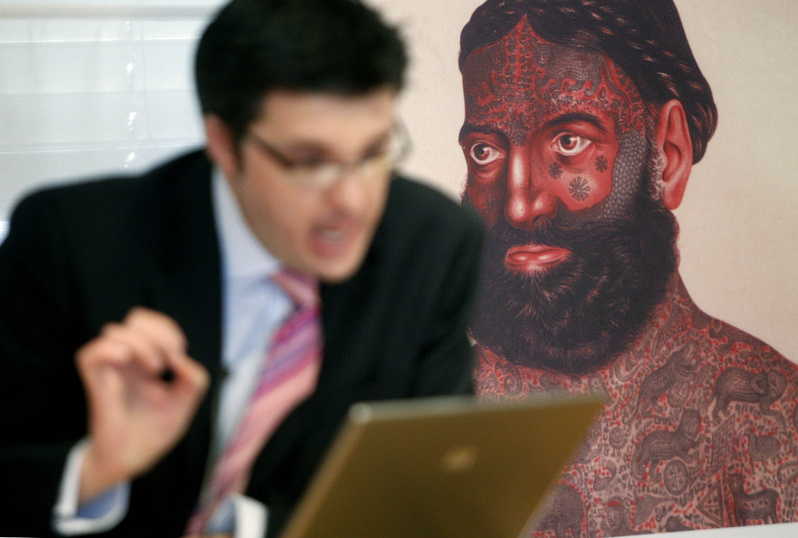VATICAN CITY — Tattooed mummies, Crusaders who branded their foreheads with crosses and inked Maori warriors were fodder for an unusual conference at a Vatican university Tuesday on how tattoos shape identity.
“Into the Skin: identity, symbols and history of permanent body marks” was the brainchild of a Christian arts association and Israel’s envoy to the Holy See, an unlikely participant given Judaism’s prohibition of tattooing.
Ambassador Mordechay Lewy acknowledged the paradox, saying the living memory of Auschwitz’s tattooed serial numbers added a layer to Jewish aversion to tattoos, which many Orthodox rabbis forbid because it alters the human body as a divine creation.
Yet Lewy is a respected expert in the field – and a critic of what he calls today’s “commercialization” of an important aspect of cultural history.
Tattoos “can symbolize a social rank, identify ethnic affiliation, indicate experience of religious pilgrimage or of a rite of passage,” he told the two-day conference, which was held at the Vatican’s Pontifical Urbaniana University.
The presentations gave an eye-opening look at the use of tattooing over time. Luc Renaut of the University of Poitiers spoke of the tattoos on mummies unearthed in Egypt, saying they’d probably been married to Nubian chiefs and were “living trophies” that increased the chief’s prestige.
Mystics over time have claimed the “stigmata” – the wounds that imitate Christ’s wounds from his crucifixion.
And even today, many players on New Zealand’s All Blacks rugby team sport the traditional tattoos of the country’s Maori indigenous peoples, said Sean Mallon of the Museum of New Zealand.
Send questions/comments to the editors.



Success. Please wait for the page to reload. If the page does not reload within 5 seconds, please refresh the page.
Enter your email and password to access comments.
Hi, to comment on stories you must . This profile is in addition to your subscription and website login.
Already have a commenting profile? .
Invalid username/password.
Please check your email to confirm and complete your registration.
Only subscribers are eligible to post comments. Please subscribe or login first for digital access. Here’s why.
Use the form below to reset your password. When you've submitted your account email, we will send an email with a reset code.